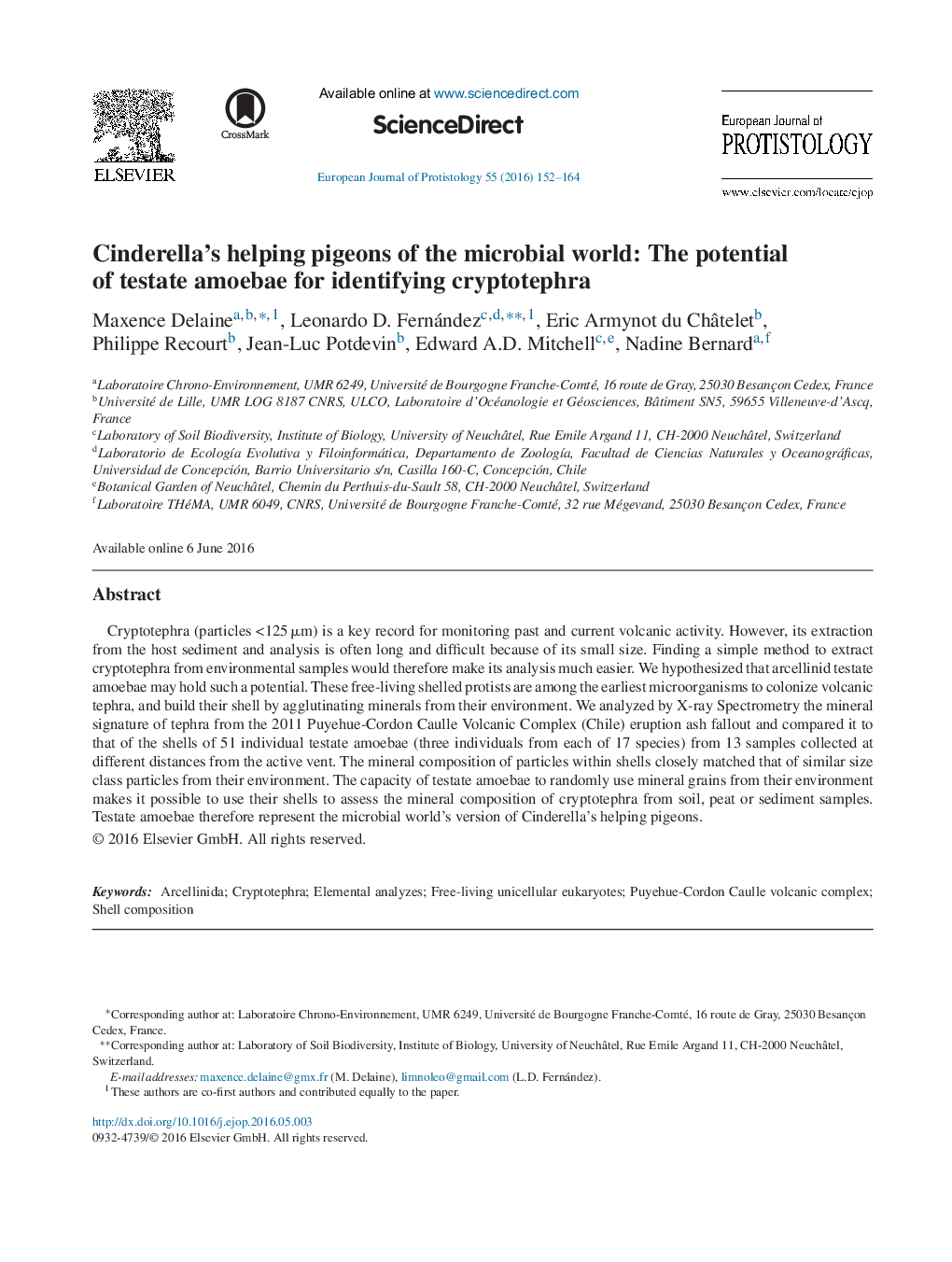| Article ID | Journal | Published Year | Pages | File Type |
|---|---|---|---|---|
| 5517532 | European Journal of Protistology | 2016 | 13 Pages |
Cryptotephra (particles <125 μm) is a key record for monitoring past and current volcanic activity. However, its extraction from the host sediment and analysis is often long and difficult because of its small size. Finding a simple method to extract cryptotephra from environmental samples would therefore make its analysis much easier. We hypothesized that arcellinid testate amoebae may hold such a potential. These free-living shelled protists are among the earliest microorganisms to colonize volcanic tephra, and build their shell by agglutinating minerals from their environment. We analyzed by X-ray Spectrometry the mineral signature of tephra from the 2011 Puyehue-Cordon Caulle Volcanic Complex (Chile) eruption ash fallout and compared it to that of the shells of 51 individual testate amoebae (three individuals from each of 17 species) from 13 samples collected at different distances from the active vent. The mineral composition of particles within shells closely matched that of similar size class particles from their environment. The capacity of testate amoebae to randomly use mineral grains from their environment makes it possible to use their shells to assess the mineral composition of cryptotephra from soil, peat or sediment samples. Testate amoebae therefore represent the microbial world's version of Cinderella's helping pigeons.
Graphical abstractDownload full-size image
